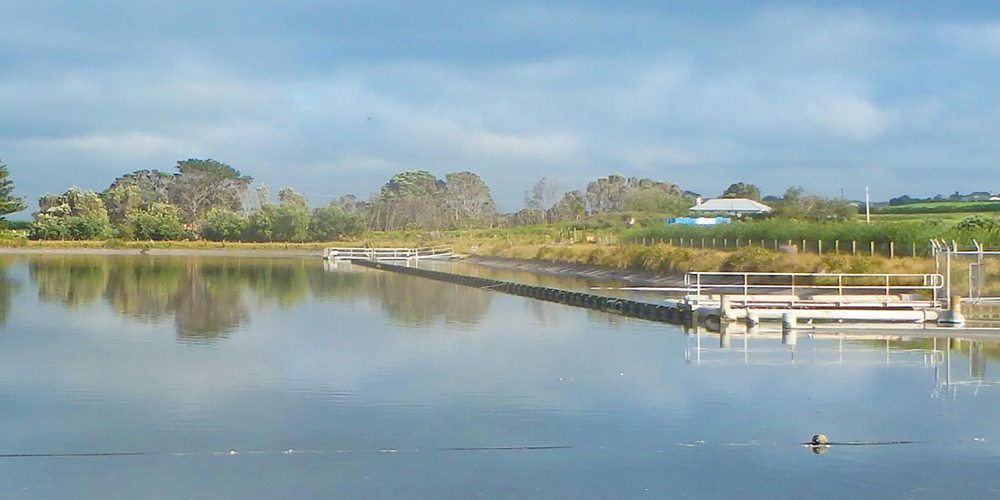
Bacteria eats sludge, saves $3.7m
The South Taranaki District Council is the first council to use an innovative scheme using bacteria for sludge removal in New Zealand from the Hawera wastewater treatment pond.
The success of the new scheme is saving South Taranaki ratepayers millions of dollars, the council says.
In just over nine months, from last March to last December, an estimated 22 per cent of the sludge, about 18,700 cubic metres, was removed from the pond by bacteria.
The unique Hawera trial, headed by council operations and projects manager Viv Eyberg, was a New Zealand first in municipal wastewater systems and would save ratepayers $3.7 million over the next four years, Mr Eyberg said.
He had attended a seminar by Hastings company Parklink in September 2011 in Palmerston North on using bacteria for sludge control in New Zealand.
Now, with the results at Hawera so successful, Mr Eyberg is convinced this sludge removal scheme could be used in council wastewater ponds New Zealand-wide.
This week Mr Eyberg is in Blenheim at the Australia/New Zealand Biosolid Conference and Workshop to speak with several representatives of councils throughout New Zealand, all keen to hear the Hawera “bug success story”.
Since publicising the success of the bacteria in the Hawera wastewater pond in February, the phones at the council had been “ringing off the hook”, Mr Eyberg said.
Council chief executive Craig Stevenson said Mr Eyberg had come to him a year ago, excited about the prospect of using sludge-eating bacteria.
“He told me there was a risk factor but that the scheme was unique and could save council millions of dollars. Well, from the trial it will be $3.7 million so far, to be exact, and this process was all natural.”

Mr Stevenson said his council was delighted with results so far.
“Nationally, beneficial reuse or responsible disposal of bio-solids is a big issue and it’s great to see STDC is at the forefront of an innovative solution that is environmentally responsible and saves our ratepayers a great deal of money.
“This solution has the potential to save the local government sector tens of millions of dollars …”
The council’s group manager engineering services, Brent Manning, who worked with Mr Eyberg, said the process basically involved putting bacteria which produced enzymes (called exoenzymes) into the wastewater pond.
“These exoenzymes help break the organic waste in the pond down into a soluble form which can then be more easily consumed by the bacteria. The process of converting the larger particles of sludge into a soluble food is very slow and can be affected by temperature.
“However, once the organic waste has been broken down it’s then rapidly consumed and is largely converted into carbon dioxide (CO2) and water, along with new bacterial cells. The bacteria that produce the exoenzymes are naturally occurring and have not been modified in any way.”
There were 85,000 cubic metres of sludge in the Hawera wastewater pond which, using the traditional method, would involve mechanically dredging and separating the sludge, he said.
“Which was a relatively expensive process and also required a site to bury the sludge,” he said.
So far the scheme had cost $164,000. The final cost was estimated to be $646,000 over four years, meaning a $3.7 million saving. Sludge built up over four years and cost $4.38 million every time to remove to landfill.
As well as the financial benefits, it had highlighted that the environmental benefits of biological sludge removal were considerable compared to simply sending the sludge to landfill, he said. If done correctly, sludge management in New Zealand could potentially be saving companies a lot of money.
“There has always been a concern trying to remove sludge from an operating pond.”
Because it was a trial, biological sludge removal had never been used before, and “we had to be very careful that whatever we added to the pond did not have a negative effect on the treatment process”, Mr Manning said.
The amount of bacteria added to the pond determined the speed with which the sludge was removed. Too much could produce a toxic shock, with the treatment process failing and resulting in little treatment and a pungent odour such as Wanganui was dealing with.
The success meant biological removal of sludge would go ahead in other wastewater treatment ponds in the district, starting with Waverley in spring/summer 2013/14.
This week Parklink’s owner, Paul Senior, was in Hawera, delighted that the latest sludge removal showed a “huge” 46 per cent of sludge removed from the pond: “This is great, we’re very happy with the result. It’s a great success.”
Though the company had been “involved” with Wanganui, the situation there was too difficult and complex, he said. “A whole set of very difficult problems.”
Mr Senior established his firm just 12 months ago.”I have worked with this technology for 15 years but previously the market was not ready for the concept as a standalone service. With environmental regulations becoming tighter there is now a need for conscientious resource management.” It was about keeping things liquefied, he said.
“My systems are more cost-effective compared to traditional methods of stirring or effluent removal services.”
The Parklink factory is based in Hastings, with five bioreactors growing pure strain cultures of the bacteria for various liquid-cleaning situations. Contracted transport companies delivered the live cultures to clients, he said.
Bacteria were preconditioned at the factory to create various strengths of enzymatic material.
“Once this highly active material is introduced to a pond or dam, the bacteria that are already there and the extra bacteria introduced are able to go on a feeding frenzy and reduce sediment by the tonne, extremely cost-effectively.”
In the right conditions, bacteria never slept or took smoko breaks: “They just keep on feeding.”
